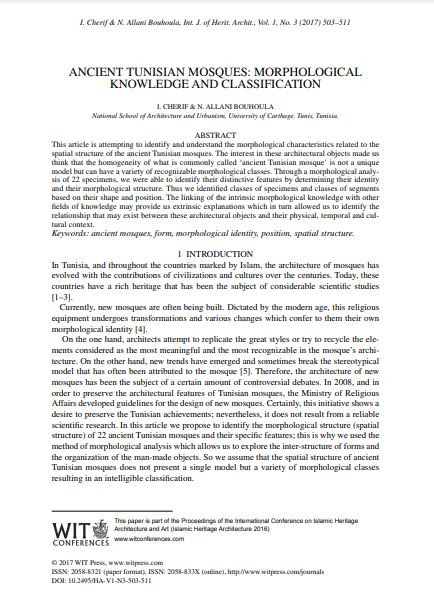
This article attempts to identify and understand the morphological characteristics related to the spatial structure of the ancient Tunisian mosques. The interest in these architectural objects made us think that the homogeneity of what is commonly called ‘ancient Tunisian mosque’ is not a unique model but can have a variety of recognizable morphological classes. Through a morphological analysis of 22 specimens, we were able to identify their distinctive features by determining their identity and their morphological structure. Thus we identified classes of specimens and classes of segments based on their shape and position. The linking of the intrinsic morphological knowledge with other fields of knowledge may provide us with extrinsic explanations which in turn allowed us to identify the relationship that may exist between these architectural objects and their physical, temporal and cultural context.
I agree to the terms outlined below:
You agree to upload and assign Mosqpedia Database the rights to use the content worldwide and in perpetuity across all current and future media platforms. Mosqpedia Database may edit, copy, adapt and translate your contribution.
The content will be distributed under the Creative Commons Attribution-Deed – Attribution-NonCommercial-NoDerivatives 4.0 International – Creative Commons
All data will be stored in line with data protection regulations.